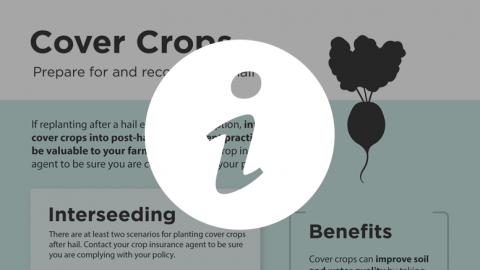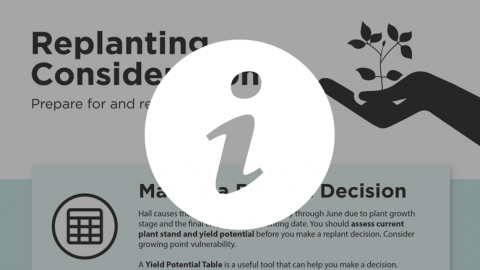Establishing Cover Crops for Grazing in Hail-damaged Crop Fields
The main economic factor resulting from wind and hail damage to corn and soybean fields is yield loss through elimination or reduction of grain production. In addition, much of the residue that would usually be available for erosion protection or winter forage is also lost.
Managing Post-Hail Threats from Disease and Insects
Hail damage to plants can increase the likelihood of inoculation of some plant pathogens and infestation of some insect pests. These organisms can increase yield losses and, in some cases, make grain unmarketable.
How To’s of Crop Damage Assessment
Identify the plant growth stage. If it’s difficult to determine, use planting date and growing degree days as a guide.
Late Season Must-Do's
Use this time to evaluate production practices used and plan for next year’s crop.
Early Season Must-Do's
A number of factors should be considered when evaluating early season crop damage.
In-Season Must-Do's
Evaluating and recording crop progress each week will be helpful in determining the extent of crop damage.
Infographic: Cover Crops
If replanting after a hail event is not an option, integrating cover crops into post-hail management practices may be an option. This infographic shares what you need to know about cover crops: benefits, interseeding, and selection.
Infographic: Replanting Considerations
Hail causes the most uncertainty in late May through June due to plant growth stage and the final crop insurance planting date. During this time, many farmers find themselves asking the replant question. This infographic highlights what factors to consider when making the decision to replant or not.

